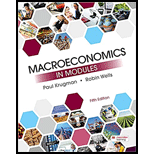
What is the source of surplus in this industry? Who generates it? How is it divided among various agents (author, publisher and retailer)?
Concept introduction:
Surplus:
profit
Publishing industry:
this is an industry which makes the knowledge available to the public through magazines, journals, books etc.
Explanation of Solution
Printing and Publishing has been a big industry since ages .This business is about selling ideas, dreams, thoughts and much more profits are being generated through the number of sources. Among books, fiction has always had the largest share followed by non-fiction, children’s books. Major titles are always the blockbuster for publishing houses.
The other new smart way to earn money is to print on demand where printing is being done on demand only so no large quantity printing, no inventory cost and no distribution cost as well and hence more profits for the house.
Self-publishing is also a new way of publishing where authors take all the responsibility from writing to marketing (simply publishing house is not being hired) and author can have better share of revenues.
Distribution of profit among Authors, Publisher and Retailer
Generally, the distribution is as follows
- 45% to retailer
- 10% to wholesalers
- 10% to publisher for printing
- 8% for marketing to publisher
- 13% to publisher for pre-production
- 15% to author (as royalty)
Data reveals that the retailer gets the most out of sale price, publisher has to meet certain expenses like employee cost, design cost, proofreading cost so their profit margin is very less and the author who is the creator also does not get too much share of their work
All the agents of the publishing industry generates a profit collectively
That doesn’t mean the publisher gets all that the author doesn’t, though. Bookstores need their cut as well. Publishers usually sell books through a distribution network for 40-60% of cover price. Retailers keep most of the remainder of the sale price, with a portion going to the
What percentage of profits do publishing companies take to publish a book?
Answer
Request
The author averages about 14.5% in royalties. The rest goes to the publisher and the author’s agent.
It depends on countless factors, which include: employee’s costs, proofreading costs, design costs, print quality can influence on this number as well and so on. Usually something around 80% of the selling price remains with the publisher, however, of this 80%, I'd say another ~80% are to pay the bills. Therefore, I'd say that from the price the book was sold, the publisher’s profit with the book would be around 15%.
The royalties paid to the author is just another cost to the publisher, and any profit that they make is the reward for the risk that they take for printing that book
It is a common practice that the author, the original creator of the work, signs the contract awarding him or her only around 10% of the proceeds of the book.[10] Such contract leaves 90% of the book proceeds to the publishing houses, distribution companies, marketers, and retailers. One example (rearranged) of the distribution of proceeds from the sale of a book was given as follows:
You should go into publishing, selling metals and minerals, investing in software and websites or start selling cigarettes. You can combine your investment in cigarettes with beer brewing and by that perhaps increase your
Homepage

Federico PistonoFollow
I like to solve problems.
Jan 28, 2017
Traditional vs Self-Publishing, How Much Money Can You Really Make?
Pros, Cons, and Lessons Learned by a Best-Selling Author
You have been thinking about it for a while. To put all those thoughts into words and start typing. To write a book, and become an author. Maybe you even dared to imagine what it would be like to quit your job and just focus on doing what you love.
To make your passion your job.
This is the dream I had back when I was still working for a company, six years ago. At the time, I had no idea what I was getting myself into, and I didn’t have any hopes for success. I was just a nerdy kid who wanted to tell a story.
My book went on to become a best-seller on Amazon, it was covered by the BBC, VICE, The Wall Street Journal, Wired, and it influenced policy at the European Commission and the Italian Parliament. It received enthusiastic praises by XPRIZE founder Peter Diamandis, the Financials Times described it as Johann Rupert’s favorite book. It was then translated to Spanish, German, Italian, Portuguese, Complex and Simplified Chinese, and it’s now coming out in Korean.
Since then, I have given advice to many dear friends who wanted to follow a similar path, find their own voice, and publish their first book.
“How do I start writing my book?”
“Should I find a publishing house, or should I self-publish?”
“How should I market it?”
“How long does it take?”
“How much money can I make?”
… and on, and on. These are just some of the numerous questions that keep popping up. Not long ago, the nth friend told me, once again, “Hey this was really useful, you should write a book about it!”.
Alas, I’m not going to write a book on it (well, at least not for now), mainly for two reasons: (1) lack of time and (2) some did already, and it was pretty good.
Instead, I’ll be writing an article—which might turn into a series—with the hope that:
- It can help you too, as it did my friends.
- It can scale and save me time. I enjoy one-on-one with friends, but I can’t do it for all the random people who write me and ask me for advice.
I’ll be giving you the essential lessons that I’ve learned the hard way, and that I wish I had known when I started.
I self-published the book in English, Spanish, and Italian, while I decided to go with publishers for German, Complex and Simplified Chinese, Portuguese, and Korean. I know both worlds, and I suffered through the pains and tribulations of each.
I’ll be taking a big risk by revealing some personal details and some of the industry’s best-kept secrets and I’m sure this will anger someone. But hey, I’m a no-bullshit kind of guy.

Lesson 1: Do Not Write a Book to Make Money
If you’re thinking of writing a book so you can make loads of money, retire and enjoy piña colada in some pacific island, think again.
I’ll be very blunt:
It’s almost impossible to make a living with book sales.
This is the hard truth, and soon it will become obvious why.
Yes, I’m sure you’ve read a story somewhere about a guy who sold gazillion copies by self-publishing on Amazon, or the wunderkind who got a million-dollar deal with her first book. And that’s exactly why you read them, they’re so astronomically unlikely that someone wrote an article about it.
Most people don’t make any money writing books, and chances are you won’t be part of the 0.01% that makes it.
This is a no-bullshit walkthrough of what you can realistically get.
How Much Money Can You Make With a Publishing House?
The math is simple. If you are a first-time author and you go with a publisher, you can expect the following deal:
- Advance: $2−4k
- 6−10% of the book sales—usually in two-tiers, a lower percentage up to 10k copies, 1−2% higher after that
- 20−30% of the e-book sales
If you’re lucky.
In its entire lifetime.
Authors are expected to do their own marketing, social media, and outreach. The reason, again, is simple math: publishing houses don’t have a budget for you. Unless they think you can sell hundreds of thousands of copies, which is unlikely, they will expect you to sell about 2,000, which barely covers the essential expenses.
For example, Amazon Kindle Direct Publishing (KDP) will claim to give 30% or 70% to the authors (depending on the deal), except it only applies to sales on specific territories, then there is VAT, taxes, wire transfers fees, fees for cashing checks and for converting currencies, and almost each country has its own variable pricing and offers.
In the end, it’s not 30% or 70%, not even close. In my case, I got an average of 41%.
Want to see more full solutions like this?
Chapter 13 Solutions
Loose-leaf Version for Microeconomics in Modules
- how commond economies relate to principle Of Economics ?arrow_forwardCritically analyse the five (5) characteristics of Ubuntu and provide examples of how they apply to the National Health Insurance (NHI) in South Africa.arrow_forwardCritically analyse the five (5) characteristics of Ubuntu and provide examples of how they apply to the National Health Insurance (NHI) in South Africa.arrow_forward
- Outline the nine (9) consumer rights as specified in the Consumer Rights Act in South Africa.arrow_forwardIn what ways could you show the attractiveness of Philippines in the form of videos/campaigns to foreign investors? Cite 10 examples.arrow_forwardExplain the following terms and provide an example for each term: • Corruption • Fraud • Briberyarrow_forward
- In what ways could you show the attractiveness of a country in the form of videos/campaigns?arrow_forwardWith the VBS scenario in mind, debate with your own words the view that stakeholders are the primary reason why business ethics must be implemented.arrow_forwardThe unethical decisions taken by the VBS management affected the lives of many of their clients who trusted their business and services You are appointed as an ethics officer at Tyme Bank. Advise the management regarding the role of legislation in South Africa in providing the legal framework for business operations.arrow_forward

 Principles of Economics (12th Edition)EconomicsISBN:9780134078779Author:Karl E. Case, Ray C. Fair, Sharon E. OsterPublisher:PEARSON
Principles of Economics (12th Edition)EconomicsISBN:9780134078779Author:Karl E. Case, Ray C. Fair, Sharon E. OsterPublisher:PEARSON Engineering Economy (17th Edition)EconomicsISBN:9780134870069Author:William G. Sullivan, Elin M. Wicks, C. Patrick KoellingPublisher:PEARSON
Engineering Economy (17th Edition)EconomicsISBN:9780134870069Author:William G. Sullivan, Elin M. Wicks, C. Patrick KoellingPublisher:PEARSON Principles of Economics (MindTap Course List)EconomicsISBN:9781305585126Author:N. Gregory MankiwPublisher:Cengage Learning
Principles of Economics (MindTap Course List)EconomicsISBN:9781305585126Author:N. Gregory MankiwPublisher:Cengage Learning Managerial Economics: A Problem Solving ApproachEconomicsISBN:9781337106665Author:Luke M. Froeb, Brian T. McCann, Michael R. Ward, Mike ShorPublisher:Cengage Learning
Managerial Economics: A Problem Solving ApproachEconomicsISBN:9781337106665Author:Luke M. Froeb, Brian T. McCann, Michael R. Ward, Mike ShorPublisher:Cengage Learning Managerial Economics & Business Strategy (Mcgraw-...EconomicsISBN:9781259290619Author:Michael Baye, Jeff PrincePublisher:McGraw-Hill Education
Managerial Economics & Business Strategy (Mcgraw-...EconomicsISBN:9781259290619Author:Michael Baye, Jeff PrincePublisher:McGraw-Hill Education





